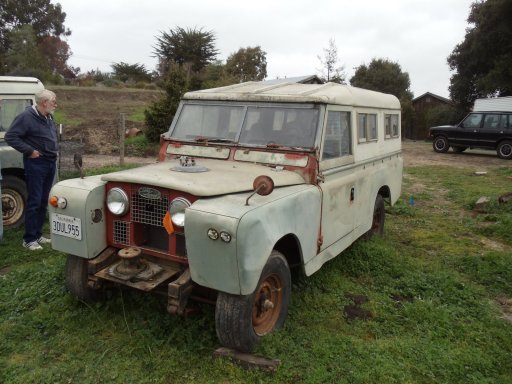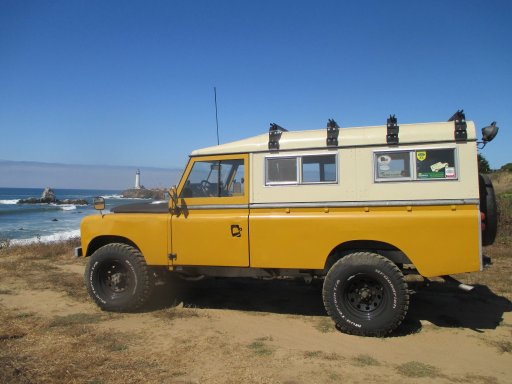Billiebob has good advice there — trained professionals will spot stuff that a DIY-er might miss that will cause you headaches or worse — this kind of travel can be incredibly risky, and if you do have a mechanical issue in some places, it can be life threatening so being confident in the mechanical reliability of your rig is important, and the professionals will give a typical person that confidence. There are always stories of “I got my mechanic to do XYZ and the next day I broke down, from now on I’m doing it myself” — (I’ve had that experience myself and it does inform my desire to fix things myself) — but the overwhelming majority of mechanical repairs are excellent. Nobody posts on the internet when their mechanic fixes something and it works great (with the exception of BIlliebob in this thread! :D) so my point is, relying on mechanics is for the most part a very safe bet.
On the other hand, if we only rely on professionals, we will never learn and as
@static said, that can be a fun part of this hobby. My suggestion is if a person wants to grow into a DIY-mechanic, they should split the difference until they get confident. Here’s what I mean:
1) Do basic stuff yourself. Start small like oil changes, installation of an accessory or two (lights are a great way to learn about electrical; these days they often even come with harnesses). But while you do this basic stuff, to @M Rose’s point, don’t just go through the instructions; do your best to understand WHY you are being instructed to do things a certain way. Good instructions tell you the “why”, but there are not many good instructions out there — that’s why I rely heavily on YouTube. Don’t just plug things in and turn wrenches — think through your project and ask “What does this part do? Why does this bolt go there? How come that bolt has a non-threaded part on it? Oh it’s not a bolt, it’s more of a pin — OK. So why does it’s torque setting seem so light in the instructions? It must need some play for the component; why is there play? Because the component in this case is the brake caliper pin and pads need to slide on these pins. Why? Because there’s hydraulics that press the pads to the disc. What for? Thats how the brakes work, by grabbing the disc and introducing friction to slow the vehicle.
(That’s just a sample of thinking through a component - I wouldn’t suggest brakes as your first turn-of-a-wrench necessarily!)
2) Regular inspections with a shop. These are usually fairly affordable (an hour or two of shop rates) and they often have deals on the inspections to get you in the door. If the inspection notices minor stuff - like you need a tire rotation or maybe they recommend a new set of shock absorbers — you can always opt to take your car home and DIY It, further growing your skills in the mechanical side while relying on the professional‘s experience to spot the stuff you don’t know you need to pay attention to. But if they catch something big - like a leaking rear main seal on your engine — that is beyond your current skill set, you can always get them to do it. But, in a visit to 1) above, spend some time understanding the job, even if you’re not doing it — what does the rear main seal do? What is involved in changing it? What are the consequences if it’s leaking? Of course, to undersand this stuff you need learning resources, which brings me to…
3) Get good manuals. The only way to know if a job is easy or hard is to know what the job entails from start to finish. The easiest way to gain this knowledge is through a good shop manual. Haynes/Chilton type manuals are good enough for basic stuff, but I personally prefer using www.alldatadiy.com; this allows you to buy service manuals for most vehicles and access them digitally. You can sometimes get factory service manuals from dealerships, and these are the absolute best option, but they have a price tag to match. Whatever resource you use, just remember — like the IKEA instructions say — read the directions on how to do a job from start to finish a few times until you are confident in the process. Often, you will run into situations like this; let’s say you are installing transfer case breathers:
Step 1: Remove exhaust clamps
Step 2: Remove exhaust pipe from engine
Step 3: Detach transfer case and lower it
Step 4: Attach breather hose to top of transfer case
Step 5: Raise transfer case and reattach
Step 6: Reinstall exhaust pipe onto flanges
Step 7: Reinstall exhaust clamps.
The above is a pretty common set of steps, and it would appear that you are 7 steps away from installing a breather hose to your transfer case. Seems easy, right? But, how do you detach and lower the transfer case? That is likely a totally different procedure that might look like this:
Step 1: Raise vehicle and support on jackstands.
Step 2: Remove exhaust system
Step 3: Detach front Drive shaft. Note these are balanced so be sure to index drive shaft and flange.
Step 4: Drain transfer case fluid
Step 5: Support transfer case with jack; beware transfer case may be heavy.
Step 6: Detach rear drive shaft.
Step 7: (whatever)
……
Step 19: (whatever)
……
Step 75: Lower vehicle from jack stands
I won’t keep going but you get the idea — the “easy” job of installing a breather might turn into a “complex” job that is beyond your comfort level very fast, so it’s best to ensure you know the whole procedure before beginning.
The advantage of this approach is that you build technical skills (wrench turning) alongside your understanding of the machine. This doesn’t guarantee you can fix your rig trailside, but it improves your chances dramatically, and there’s no feeling quite like the joy that comes from saving yourself from a tricky spot using your knowledge and skills and a bit of creativity. Some of my fondest memories of adventures are situations like this.









